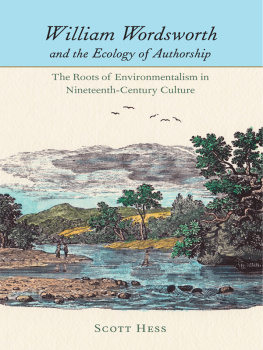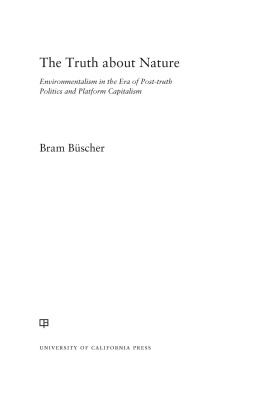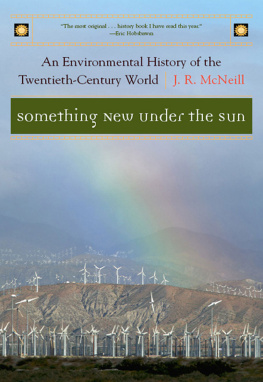Designed by Michelle Coppedge. Set in Sabon with ITC American Typewriter display by Rebecca Evans. Manufactured in the United States of America.
The paper in this book meets the guidelines for permanence and durability of the Committee on Production Guidelines for Book Longevity of the Council on Library Resources.
The University of North Carolina Press has been a member of the Green Press Initiative since 2003.
Illustrations, Maps, and Figures
Illustrations
The upper-end nature sell
The Kanes skunk
The view from Bel Air
A drylot in Dairy Valley
California gnatcatcher
The Alvas house in San Gabriel
The Rynersons house in Lakewood
Steve Rynerson and Chirpy
The Lillards backyard
The first recorded photograph of smog
Early antismog protesters
A fish kill image that circulated
Los Angeless unvanquished smog
Sixth graders joining in
Earth Day protests cross the color line
Earth Day montage
Maps
Geographic focus of postWorld War II suburbia coverage
Long Island terrain and places
Forest cover in selected parts of Long Island, 19441947 versus 1967
Groundwater threats on Long Island by income level
Los Angeles terrain and places
Dust fall in the Los Angeles basin by income level
Organic food stores and ecology action groups by state, 1970
The Los Angeles and New York City areas in pollution coverage
Figures
1. Long Islands aquifers
2. Decline of country life, 19001965
3. Conservation, environment, nature: The long view, 19001985
4. The rise of suburbia in New York and Los Angeles, 19001968
5. Pollution as a driving issue, 19501971
6. Sierra Club membership in selected Los Angeles suburbs, 19501969
Prologue
Greens Suburban Provenance
This books most formative moment came in 1994, when I became a suburbanite. That year, my wife and I bought a house on Long Island, New York, by local lights the nations first suburb. Seeking shelter on Long Island seemed about as far as you could get from anyones idea of a nature quest. Driving around, my overriding impression was how, as if in archetype, its endless subdivisions, malls, and traffic matched my preconceptions of what a suburb was. To the realtor, we must have seemed just as true to type: first-time home buyers, looking for a place in between our jobs to raise our seven-month-old. After two months of house touring and haggling, we agreed to buy a three-bedroom Cape. Trading away decades of salary, but eager to end our bit part as buyers, we signed the papers for a tiny piece of the New York metropolis.
At least, that side of the place seemed easiest to see. Later, I grew to realize there was more to our new home than that.
I found it difficult to disentangle my initial, favorable impression of the house we had bought from its trees. Reaching perhaps seventy feet up, far above the roof, an oak and a linden, thick in trunk, framed our view of the house from the front the moment we first drove up. They had in all likelihood been planted, but many years back, before the house itself arose. After we had tucked away our title papers and settled into familial and workaday routines, those trees kept gaining in girth and leaf span, sprouting and shedding with the seasons, nourished by the rain. As the act of home buying faded into memory, they and other plants and creatures close by crept further into our consciousness. Around the house, they were hardest to miss when they spurred work or worry: the grass, when begging for the mower or sprinkler hose; some field mice, after wriggling their way into our kitchen; an ant colony that tracked from the linden trees roots into our basement walls. In idle moments, as well, our minds could shutter open to how profuse a life lay near at hand. One summer at dusk, as my wife sat out on the deck, three raccoons walked in single file across the back fence. Another afternoon, staring out from my upstairs study in a moment of reverie, I realized that all hint of a house or fence or road had vanished, papered over by the bright, bobbing greenery of new leaves. From the right angle, in the right light, even in this seemingly most built of places, the natural world began to loom closer.
Back to naturethe very phrase connotes the importance of memory to popular notions of what is natural and wild. Those many-lobed leaves and scampering creatures, I was not just seeing them but recognizing them. What clicked was perhaps some trace of ancestral memory, no doubt filtered through what I had read by nature writers and scientists. I also could not mistake the echoes of my own early years in a small town in the western North Carolina mountains. Back then, of course, what I had seen, like the Long Island yard ogled by our toddling child, had come less filtered through adult understanding. What struck me as well, in comparing these two places in the present, via regular returns to where my parents still lived, was how much of the built side of Long Island was overtaking Hendersonville, North Carolina.
The avalanche of new construction followed a pattern so familiar to early twenty-first-century Americans as to be ingrained in their bones. Roads added lanes, traffic, and strips of chain stores. Out next to the interstate, the first mall appeared, followed by the first Wal-Mart and a host of other big-box stores. All around the town edges, the apple orchards shrank back, ridges shed their trees, hillsides grew spotted with subdivisions. Accelerating especially over the 1990s real estate boom, the changes literally hit home in the neighborhood where the house of my childhood lay. An old sandpit where we had dug our make-believe forts filled in with split-levels. The creek we had dammed and trolled for crayfish turned trashier and smellier. Those same memories that cued my eye motes to Long Islands oaks, rhododendrons, and robins magnified my disquiet over this many-fronted assault on where they had been born.
This book is about how, through similar moments and memories, the grass roots of what we now call environmentalism first stirred. The formal research for this book began just after my Long Island move, as I looked into a band of litigants whose activism had helped inspire Rachel Carsons Silent Spring. Five years before that celebrated publication, in 1957, this groupsuburbanites alllaunched the first public trial against the pesticide DDT. Through this trial, they sought articulation and outlet This estrangement, at the heart of what were among the worlds freest and most financially lubricated land markets, pivoted around the home rather than the workplace. The alienated were owners of smaller lots, not those dispossessed of land. This alienation had historic consequences. Among them, a new movement calling itself environmentalism arose, at once sweeping and self-abnegating in vision, to become its most powerful and lasting political expression. My chief argument is this: Those ideologies and coalitions that made this movement a popular force after World War II were born in those places touched most and earliest by postwar sprawl.







